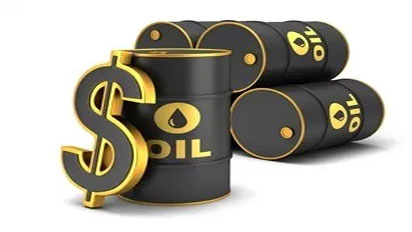Nigeria enter loss of $257.43 million, about N78.61 billion, to gas flaring in the first quarter year, as the Nigerian National Petroleum Corporation (NNPC), as well as oil and gas companies operating in the country flared 85.81 billion standard cubic feet, SCF, of gas between January and March 2018. According to data obtained from the NNPC’s Monthly Financial and Operations Report for March 2018, the volume of gas flared by oil and gas companies accounted for 11.47 per cent of total gas output of 254.68 billion SCF recorded between January and March 2018. Using an average gas price of $3 per 1, 000 SCF and an average exchange rate of N305.35 to a dollar, 85.81 billion SCF of gas flare translated to a loss of N79.8 billion to the nation.
Specifically, the report noted that in January, 31.68 billion SCF of gas was flared, translating to a loss of $95.04 million, an equivalent of N29.02 billion, while in February and March, 27.25 billion SCF and 26.88 billion SCF of gas were flared, translating to a loss of $81.75 million (N24.96 billion) and $80.64 million (N24.62 billion) respectively. The report noted that total gas supplied in the three-month period stood at 747.85 billion SCF, broken down into 253.26 billion SCF, 239.91 billion SCF and 254.68 billion SCF in January, February and March 2018 respectively. Of the total gas supplied in the period, 111.39 billion SCF was utilised domestically; 325.69 billion SCF was exported, while 310.76 was not commercialised. In the domestic gas utilisation segment, 72.22 billion SCF and 39.17 billion SCF was supplied to the power sector and industries respectively, while in the export segment, 4.77 billion SCF was for exported through the West African Gas Pipeline and 15.67 billion SCF was exported through the Escravos Gas to Liquid project. In addition, 7.56 billion SCF was exported as Natural Gas Liquids, NGL/Liquefied Petroleum Gas, LPG; while the Nigerian Liquefied Natural Gas, NLNG, exported 297.68 billion SCF of the commodity in the period under review. In the non-commercialised gas segment, 192.8 billion SCF was re-injected; 32.17 billion SCF was used as fuel gas, while 85.81 billion SCF was flared. Nigeria lost N363 bn to flare A couple of months ago, it was observed that Nigeria was losing N363 billion annually to gas flaring, while it was stated that to stop this trend, the country would require an investment of N1.085 trillion to achieve its gas flare commercialisation target. Investigation showed that Nigeria does not have accurate data of the volume of gas flared in the country, and so cannot correctly state the amount the nation is losing to gas flarring. Confirming this, the Ministry of Petroleum Resources, had disclosed in its audit that it had discovered additional 39 gas flare sites across the country, bringing the total to 178, from 139 earlier stated. It also added that more gas flare sites would likely be discovered as the audit had only received about 60 per cent of the expected data. The verification exercise, the ministry said was being conducted by the Ministry of Petroleum Resources in conjunction with the World Bank, United States Agency for International Development, USAID, and the Canadian government. It had noted that of these, 65 per cent of the flare points were onshore whilst 20 of the 89 onshore sites were large enough to independently sustain a 50 megawatts (MW) gas turbine, while it was discovered that at least 80 per cent of gas from the flaring locations could be utilised. The 139 gas flare sites, it was discovered were flaring about one billion standard cubic feet of gas per day, which could have been utilised in providing 450,000 metric tonnes of Liquefied LPG, also known as cooking gas, for over four million Nigerian households. The huge amount of gas flared in the country would have been utilised in building two to three Liquefied Natural Gas, LNG, trains; was equivalent to 22 million tonnes of carbon dioxide emissions and 51 million barrels of oil equivalent. Accordingly, the ministry said $800 million was lost directly; $350 million carbon credit value was forfeited, adding that the quantity of gas flared would have been utilised in generating 3, 000MW of electricity. The quantity of gas flared puts the current average annual gas flare reduction rate at nine per cent, making it difficult to achieve the Federal Government’s target of zero flaring by 2020. It was also observed that harnessing gas from the top 50 flare points would reduce volume of flared gas in Nigeria by 80 per cent. In addition, it was also discovered that Nigeria needs an investment of $6 billion, about N1.86 trillion, to produce about two billion standard cubic feet (SCF) of gas per day to generate 10,000 megawatts of electricity. Also, the gas flare sites it was observed were dispersed, isolated and scattered, making it difficult to harness the commodity from each of these sites profitably. The gas-gathering facility required to effectively harness the commodity, it was observed, would make the commodity so expensive, unlike the use of a mobile facility. Meanwhile, the Society of Petroleum Engineers, SPE, has called on the Federal Government to take bold initiatives towards harnessing Nigeria’s gas potentials, capable of achieving over 600 trillion standard cubic feet, scf of gas reserves. Addressing the media in Lagos ahead of the upcoming Nigeria Annual International Conference and Exhibition, NAICE, Nigeria Council chairman of the SPE, Mr Chikezie Nwosu, said the target could be achieved through the use of right policy framework. He said: “Combined with the right policy framework, 2019 should be the reset year for the oil and gas industry, where we start the growth of gas production to over 20 billion standard cubic feet per day, oil production to over 4 million barrels per day, reserves growth in oil to 40 billion barrels and conversion of a significant part of the estimated 600 Trillion standard cubic feet of prospective gas resources to contingent resources/reserves, exponential growth of refining capacity (and hence less reliance on subsidies on imported products), within a decade.” Nwosu stressed that the oil and gas sector can serve as enabler for Nigeria government’s diversification programme, but the sector needs the right business environment for it to thrive and accelerate the much-needed diversification. He said: “Policy that enables this growth is clearly critical, but long-term stability of the business environment is also important. Policy will serve to trigger the first tranche of investments, but longer term growth in these investments will only come where Nigeria has a stable investment climate. We must earn the respect and trust of local and international investments.”











